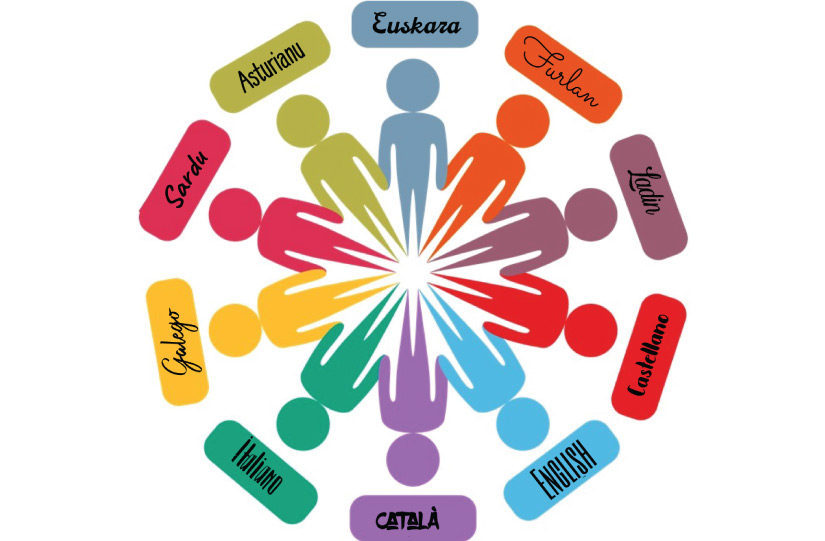“El desarrollo del multilingüismo en contextos educativos con lenguas minorizadas” (XIX Simposio Internacional LASLAB)
Entre las muchas razones por las que debería darse prioridad a las lenguas minoritarias en la educación, nos gustaría llamar la atención sobre dos: en primer lugar, la contribución de los hablantes de lenguas minorizadas al multilingüismo; y en segundo lugar, la posibilidad de que la educación en lenguas minorizadas pueda reducir la probabilidad de que dichas lenguas dejen de hablarse y desaparezcan. Ambas cuestiones, es decir, la importancia clave del multilingüismo y la protección y promoción de las lenguas en peligro y la diversidad lingüística, gozan de gran consideración en las instituciones europeas. Sin embargo, este respaldo aparentemente sólido no siempre existe en los distintos Estados o regiones. Así, en Europa hay tanto ejemplos destacados de educación multilingüe que incorporan sistemáticamente las lenguas minoritarias como de sistemas educativos que se encuentran lejos de la excelencia y en los que las lenguas locales luchan por lograr un reconocimiento y una integración plenos. Estas dos tendencias se observan con frecuencia dentro de un mismo Estado, tal y como se puede observar en España e Italia.
Los ponentes que participarán en el Simposio son expertas y expertos de siete comunidades lingüísticas minoritarias, cuatro de ellas sitas en España y tres en Italia. Las siete lenguas son “lenguas minoritarias únicas”, es decir, lenguas que no tienen un estatus mayoritario en ningún lugar: asturianu/asturiano, català/catalán, galego/gallego y euskara/euskera en España, furlan/friulano, ladino/ladino y sardu/sardo en Italia. Mientras que el euskera en Euskadi, el catalán en Cataluña, el gallego en Galicia y, en menor medida, el ladino en Trentino se benefician de una fuerte protección y promoción, las otras tres lenguas minoritarias – asturiano en Asturias, friulano en Friuli Venezia Giulia y sardo en Cerdeña – se enfrentan a circunstancias menos favorables. De hecho, estas diferencias entre las primeras y las segundas lenguas son evidentes en sus sistemas educativos.
Las presentaciones destacarán las principales características de los respectivos sistemas educativos, prestando especial atención a la coexistencia de la lengua minoritaria junto con la lengua del Estado, el inglés como lengua extranjera principal enseñada en las escuelas y otras lenguas adicionales. En las diferentes conferencias se señalarán los principales puntos fuertes y débiles que requieren atención inmediata, así como las posibles vías que podrían seguirse para promover las lenguas minorizadas en la educación, adaptando al mismo tiempo dicha actuación a un mundo cada vez más multilingüe y a los retos que la globalización plantea.
“The development of multilingualism in educational contexts with minority languages” (XIX International LASLAB Symposium)
Among the many reasons why minority languages should be prioritised in education we would like to draw attention to two: first, minority language speakers’ contribution to multilingualism; and second, the possibility that minority language education can reduce the likelihood that such languages will cease to be spoken and disappear. Both the above-mentioned issues, that is, the key importance of multilingualism and the protection and promotion of endangered languages and linguistic diversity, are held in high regard at the European level. Such ostensibly robust backing, however, is not always there in individual States or regions. Thus, in Europe, there are both outstanding examples of multilingual education that systematically incorporate minority languages and less-than-excellent educational systems where local languages struggle to achieve full acknowledgment and integration. These trends are frequently seen inside the same State, as in the situations of Spain and Italy.
The speakers taking part in the Symposium are experts from seven minority language communities, four from Spain and three from Italy. All seven languages are “unique minority languages”, that is, languages that do not have a majority status anywhere: Asturianu/Asturian, Català/Catalan, Galego/Galician and Euskara/Basque from Spain, Furlan/Friulian, Ladin/Ladin and Sardu/Sardinian from Italy. While Basque in Euskadi, Catalan in Catalonia, Galician in Galicia, and, to a lesser extent, Ladin in Trentino benefit from strong protection and promotion, the other three minority languages – Asturian in Asturias, Friulian in Friuli Venezia Giulia, and Sardinian in Sardinia – face less favourable circumstances. To be sure, such differences between them are evident in their education systems.
The presentations will highlight the main characteristics of the respective education systems, with a focus on the presence of the minority language alongside the State language, English as the primary foreign language taught in schools, and any other additional languages. They will identify the main strengths and weaknesses that require immediate attention, as well as the potential paths that could be taken to promote minority languages in education while adapting such action to an increasingly multilingual world and the challenges posed by globalisation.




